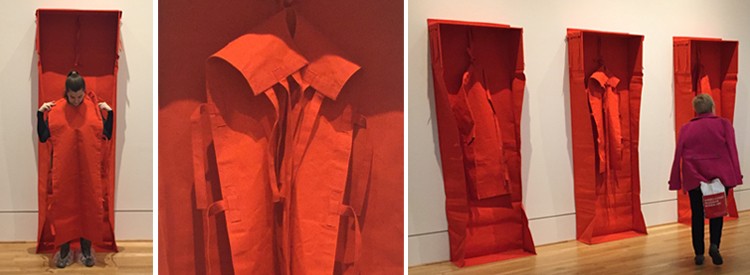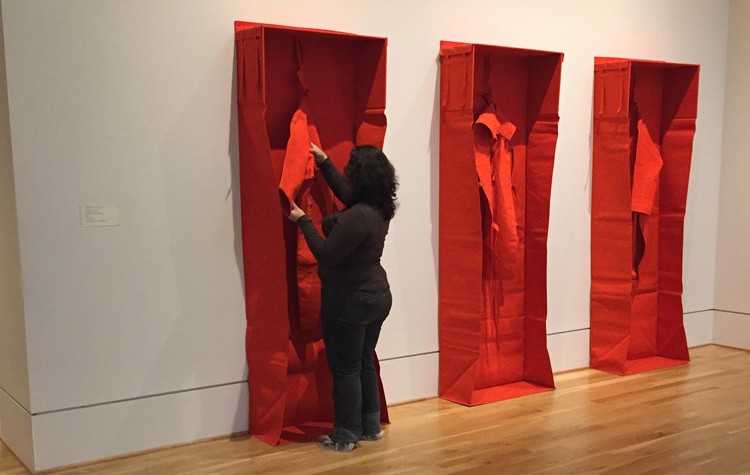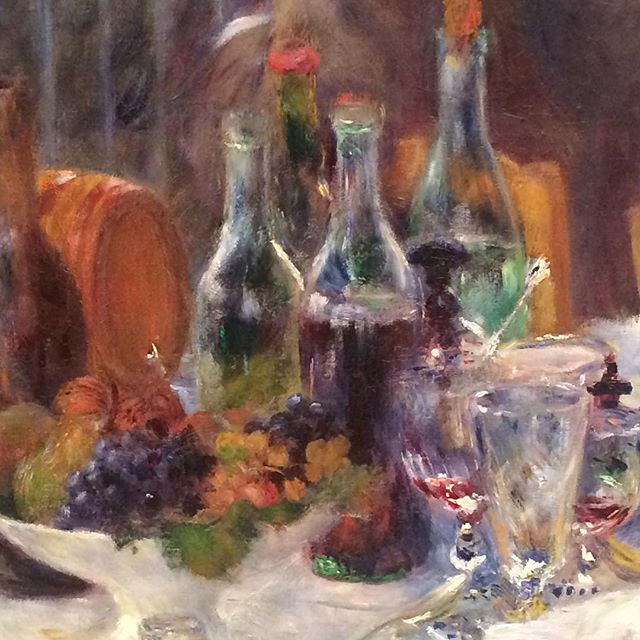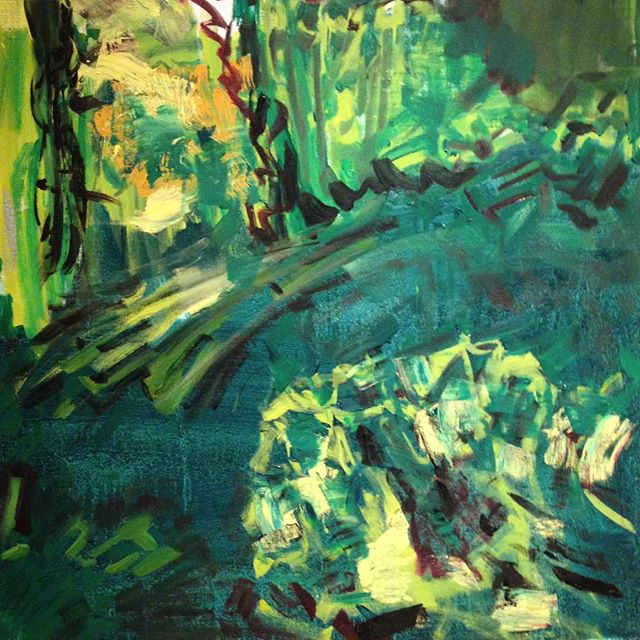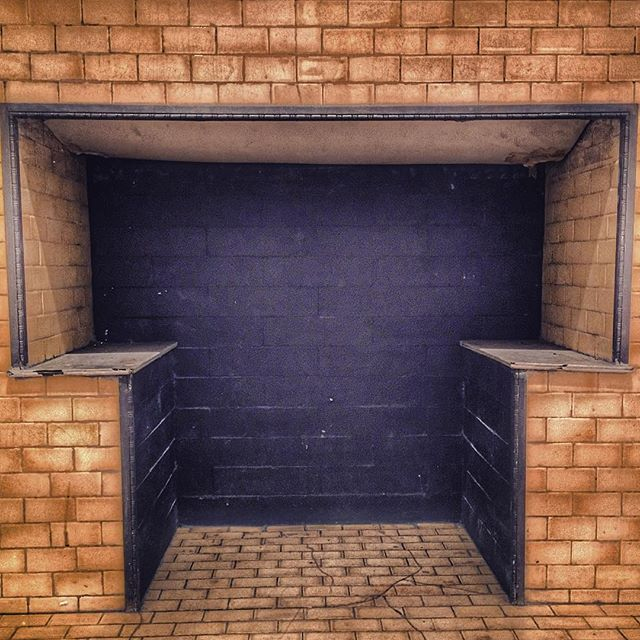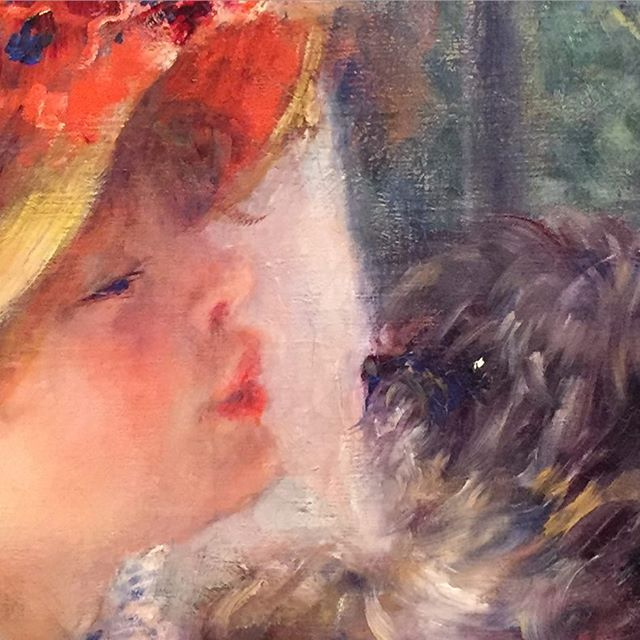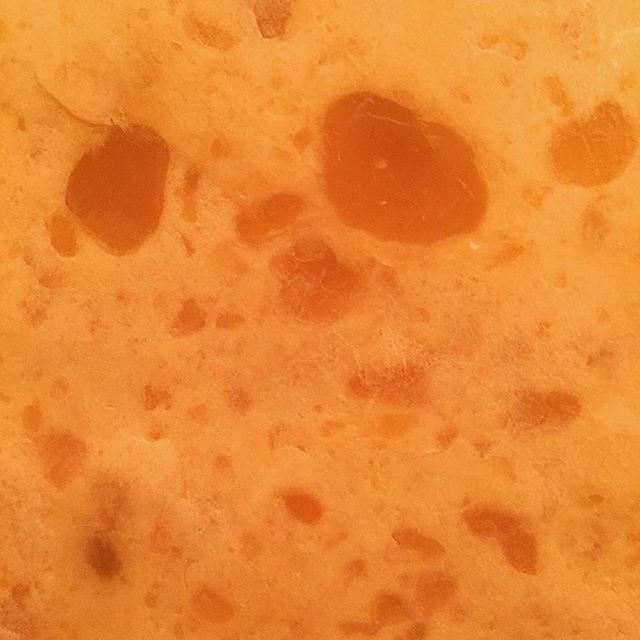This is a multi-part blog post. Read Part 1, Part 2, and Part 3.
The last person I observed in the gallery with Franz Erhard Walther’s Red Song read the directions, admired the work, became very familiar with the piece, but walked away without engaging with it. I couldn’t help but wonder, why? When I asked her, she simply told me, “I didn’t participate because I felt I was too old. If I had my kids with me I would have loved to have seen them engage with the art work.” I wonder, does interactive art have an age limit? Art is created for people of all ages and walks of life to enjoy. When it comes to viewing art from a distance, everyone experiences it. When it comes to engaging with art, it becomes difficult to accept. Is it only difficult to accept because the rules associated with a museum setting? In a world where change occurs daily, how do museums maintain their traditional standards while still evolving with the times?
Although not all visitors choose to interact with Red Song, the existence of this piece fosters curiosity and conversation. Red Song is still on view, and you’re invited to join in the interaction (visitors are invited to activate this piece between 2-3 PM daily). Create your own personal experience through your senses of vision and TOUCH.
Gina Cashia, Marketing & Communications Intern

